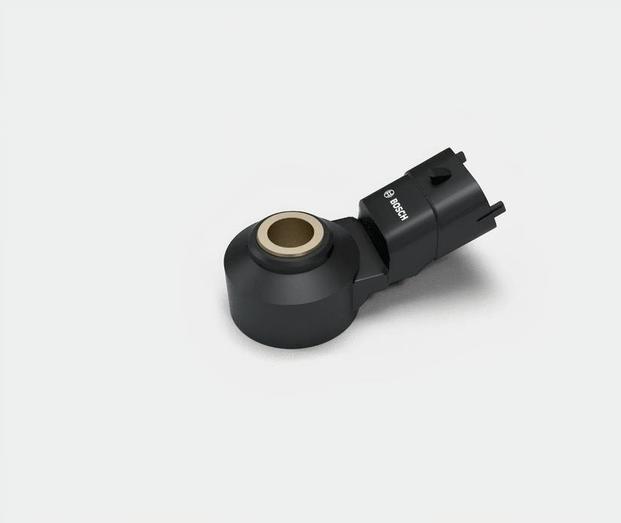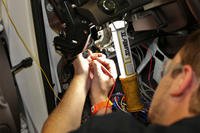by Aaron Bersee
Jump Links
- Honda And The P0325 Generic Fault Code
- The Knock Sensor Explained
- Symptoms Of A Faulty Knock Sensor
- Diagnosis And Repair
- FAQs
Hondas are famously dependable and long-lasting. Particularly those models with the 2.4-liter "K" series four-cylinder or the larger 3.5-liter "J" series V6 engines. These engines are used in many models across Honda's product line, like the Honda Accord and the popular Honda Odyssey minivan, for example. Both of these engines are known for their ability to go the distance, easily operating in the 200k-plus mile territory. Even with their glowing reputation, there are some chinks in their armor - the P0325 trouble code is one of them. In this article, common symptoms, causes and repairs of this issue are discussed.
Not all owners of Honda vehicles have or will experience any of the issues listed below. Not all Honda vehicles were affected by this issue. Vehicles experiencing engine knock, detonation, or pre-ignition will not necessarily experience catastrophic engine failure. If your vehicle is experiencing any of these issues, it is imperative to have the vehicle inspected by a trained technician for an accurate diagnosis and repair.
Honda And The P0325 Generic Fault Code

Honda
Breaking Down The Code
If you have owned an older Honda product, you may have experienced the orange glow of the check engine light for a generic fault P0325. This is not strictly an older Honda thing, but select Honda models with the K and J series engines have historically had issues related to this fault code set by the ECM. The P0325 code indicates a malfunction with the knock sensor circuit in cylinder bank one. This typically isn't a huge issue relative to other problems a vehicle could face, but it should still be addressed. If left unfixed over a prolonged amount of time, severe engine damage has been known to happen. The improper operation of any sensor on an engine will have negative effects, and you can guarantee the glaring check engine light will be there along for the ride until the situation is dealt with.
Common Causes For The P0325
There have been some problems commonly attributed to the knock sensor fault code. Starting with the most obvious is just a faulty knock sensor. Like any other sensor that can break, the knock sensor is no different. After years of exposure to the elements and extreme temperatures, sensors can fail. Damaged or frayed wiring in the knock sensor circuit is also quite common. The knock sensor was placed under the intake manifold on both the 2.4-liter four-cylinder and the 3.5-liter V6. On the 3.5-liter V6 engines, it has been observed by many technicians that rodents have chewed through exposed wiring or the exposed wiring has deteriorated insulation, causing corrosion problems and high resistance in the circuit. Damaged wires due to chaffing from constant contact with other engine parts have been seen by technicians as well. Connections of the sensor harness to the knock sensor itself have been found to be loose or the terminals within that connection can be loose as well. When a connection is loose, not only is there bad or inconsistent contact, but this leaves room for moisture to enter the equation and create corrosion. In some cases, even the ECU itself can also be the culprit.
*This table is not exhaustive; some models and years may differ that have encountered this problem, depending on personal experience.
The Knock Sensor Explained

Bosch knock sensor (Bosch-Mobility)
Knock, Knock - It's A Sensor!
A knock sensor is there to detect abnormal vibrations or sounds from an engine caused by uneven combustion events. This is often referred to as engine knock - not to be confused with rod knock. That's a different conversation all together. An engine knock can often be heard. Sometimes it is described as a pinging sound, but it always causes excess engine vibrations and sounds that are picked up by the knock sensor. The knock sensor is another tool the ECM uses to keep the engine performing safely and efficiently.
When information from the knock sensor is seen by the ECM that indicates improper or uneven combustion, the ECM makes ignition timing adjustments to manage combustion events and avoid engine damage to try and restore engine operation for optimal performance. These adjustments also have a positive impact on engine emissions and overall fuel efficiency.
The Piezoelectric Effect
The inside of a knock sensor contains a piezoelectric element or material, typically a diaphragm. The knock sensor utilizes the piezoelectric effect where pressure exerted upon a piezoelectric material, creates an electric charge. This conversion of mechanical energy into electricity is the basis on which a knock sensor operates. The knock sensor receives pressure in the form of sound or vibrations from the engine block during adverse combustion events and converts it into an electrical signal transmitted to the ECM.
Where Can The Knock Sensor Be Found?
Opening the hood on a later model vehicle can be daunting if you're unsure what you're looking at. It's especially unsettling if you're looking for a small sensor. Generally, knock sensors can be found simply bolted to the side of the engine block. Usually in a hidden spot beneath the intake or exhaust manifold. On some V block engines, the knock sensor can be found in the valley of the engine, again, under the intake manifold.
Read the full article on CarBuzz
This article originally appeared on CarBuzz and is republished here with permission.










